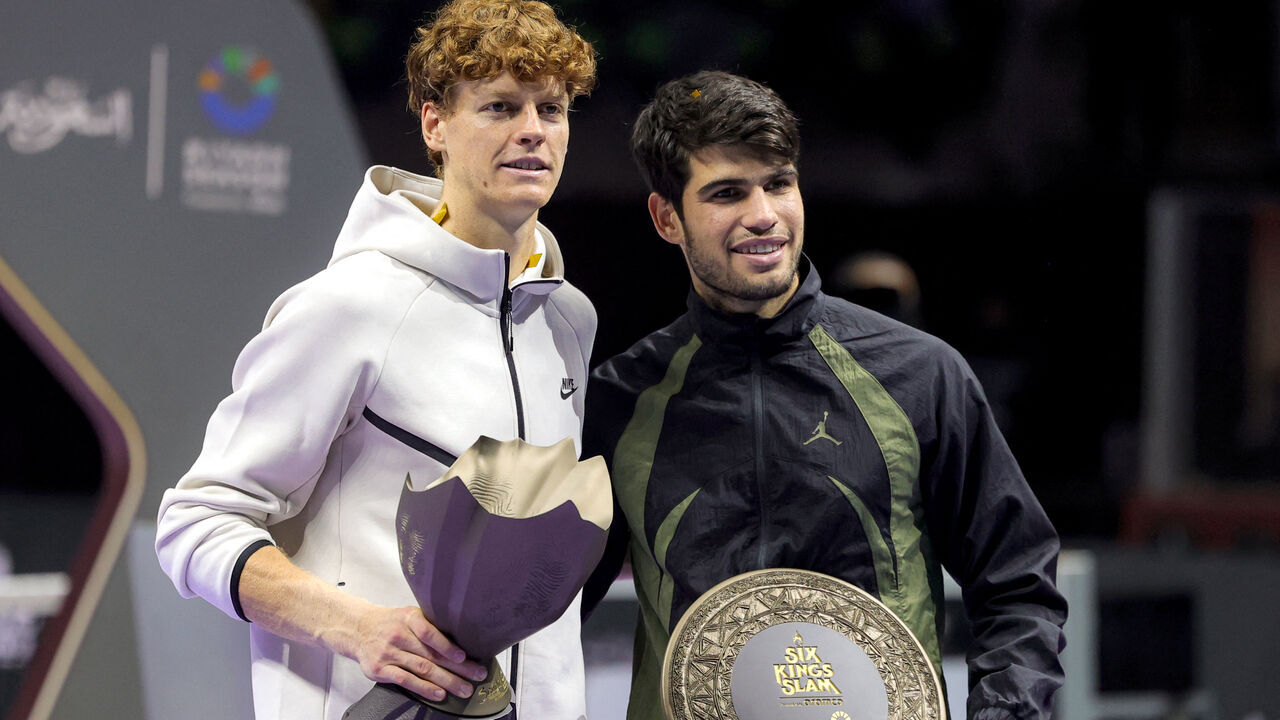Tennis' golden age is over. What are we left with?
A few thunderbolts hit the tennis world this year. Two of the very top players in the men's and women's world rankings failed doping tests. And Rafael Nadal retired.
Interestingly, the latter garnered the most attention.
The departure of the 38-year-old Spaniard from professional tennis after a loss at the Davis Cup was met with countless lovely tributes to a player who, over a career that included 22 Grand Slam titles and an absurd 14 French Open trophies, absolutely defined leaving it all on the court. His chief rival Roger Federer offered a tribute letter that was a master of the genre: He saluted Nadal for pushing him to be better, admired his relentlessness, and even managed to work in a joke about how Rafa always fiddled with his underpants, even in his greatest matches.
Some of the emotions from the tennis world are because Nadal's retirement heralds the formal end to the sport's golden age. Novak Djokovic is still playing, but there will be no more epic Slam matches between members of the Big Three. And Djokovic has finally shown signs of mortality. The 37-year-old Serb made just one major final in 2024, losing at Wimbledon. This was the first season in 22 years in which none of Federer, Nadal, or Djokovic won a major. Djokovic won Olympic gold in Paris, and you wouldn't bet against him adding to his 24 Slam titles next year, but his days as an all-conquering force appear over.
This brings the following question: What's next for tennis? More to the point: what kind of an encore can the sport possibly provide to the greatness of the past two decades?
The fact that tennis has already lost a bit of luster can be seen in the relatively mild controversies surrounding Jannik Sinner, who won his first two Slams in 2024 and has a canyon-sized gap at the top of the world rankings, and Iga Swiatek, who won her fifth career Slam and has been world No. 1 for most of the past three seasons.
Sinner, the 23-year-old Italian, was a destroyer of worlds on the hard courts, winning the Australian Open, US Open, and ATP Finals. But just before that US Open, it was announced he tested positive for a banned anabolic steroid in March. Sinner appealed, explaining that the trace amounts of the drug in his blood had been inadvertently massaged into him through cracks in his skin after a physiotherapist used a spray containing a steroid to heal a cut on his finger. That may sound like quite a coincidence, but tennis authorities found it plausible, and the story was kept quiet until Sinner formally beat the charges. (The World Anti-Doping Agency is appealing that ruling.)
Swiatek, the 23-year-old from Poland, didn't have as elaborate an explanation for the presence of a banned substance in her system. Instead, she said it was due to trace amounts in the sleep aid she takes, one of her 14(!) regular supplements. Authorities accepted this justification, agreed she wasn't trying to cheat, and gave her a one-month ban, most of which she has already served.
The common thread between the Sinner and Swiatek cases is that the players, with the resources available to elite ones with massive earnings, quickly mounted legal defenses against what, for most athletes, carries absolute liability: If a banned substance is in your system, it doesn't matter how it got there. And while both their stories are plausible, it's also not a great look that a pair of reigning Slam champions were dinged within weeks of winning those titles.

Maybe a couple of villains is what tennis needs in a post-Big Three world. As good as Sinner was in 2024, he could use a foil. Carlos Alcaraz, the 21-year-old with four Slam titles already, is the obvious contender, but the two have yet to play their best at the same time. They split the Slams between them this season but didn't meet in a final. Could they end up ripping off a Federer-Nadal-style rivalry? It's possible. However, if there's a defining element to the players vying to step up as the Big Three fades, it's how difficult it is to be as dominant as those guys were for long stretches. Other than Sinner and Alcaraz, only Daniil Medvedev and Dominic Thiem have joined the Big Three as Slam winners over the past five seasons, and they have one each.
On the women's side, it's more about the departure of the Big One. After Serena Williams retired in 2022, several would-be successors have tripped up. Bianca Andreescu and Emma Raducanu struggled with injuries. Naomi Osaka stepped away from the game to have a child and battled injuries. Ashleigh Barty retired at 25.
Swiatek and Aryna Sabalenka finally broke through with two Slams in 2024 and have become consistent winners. But like Sinner and Alcaraz, they have yet to play their best tennis against each other. It's been a decade since Serena Williams and Maria Sharapova gave women's tennis its last high-profile rivalry.
The sport lacked those kinds of moments in 2024. Swiatek and Sabalenka could still deliver them. As could Sinner and Alcaraz. Still, it'll be almost impossible to reach the heights of the Big Three. The sequel rarely lives up to the original.
Scott Stinson is a contributing writer for theScore.
HEADLINES
- 15 social media users reported as part of cyberbullying prevention program
- Why Brooksby is discussing life with autism before making return
- ATP paid $1.3M to 26 players via guaranteed-income plan in 2024
- Nadal thought about taking mental health break a few years ago
- Transgender women barred from competing with females in many UK tournaments